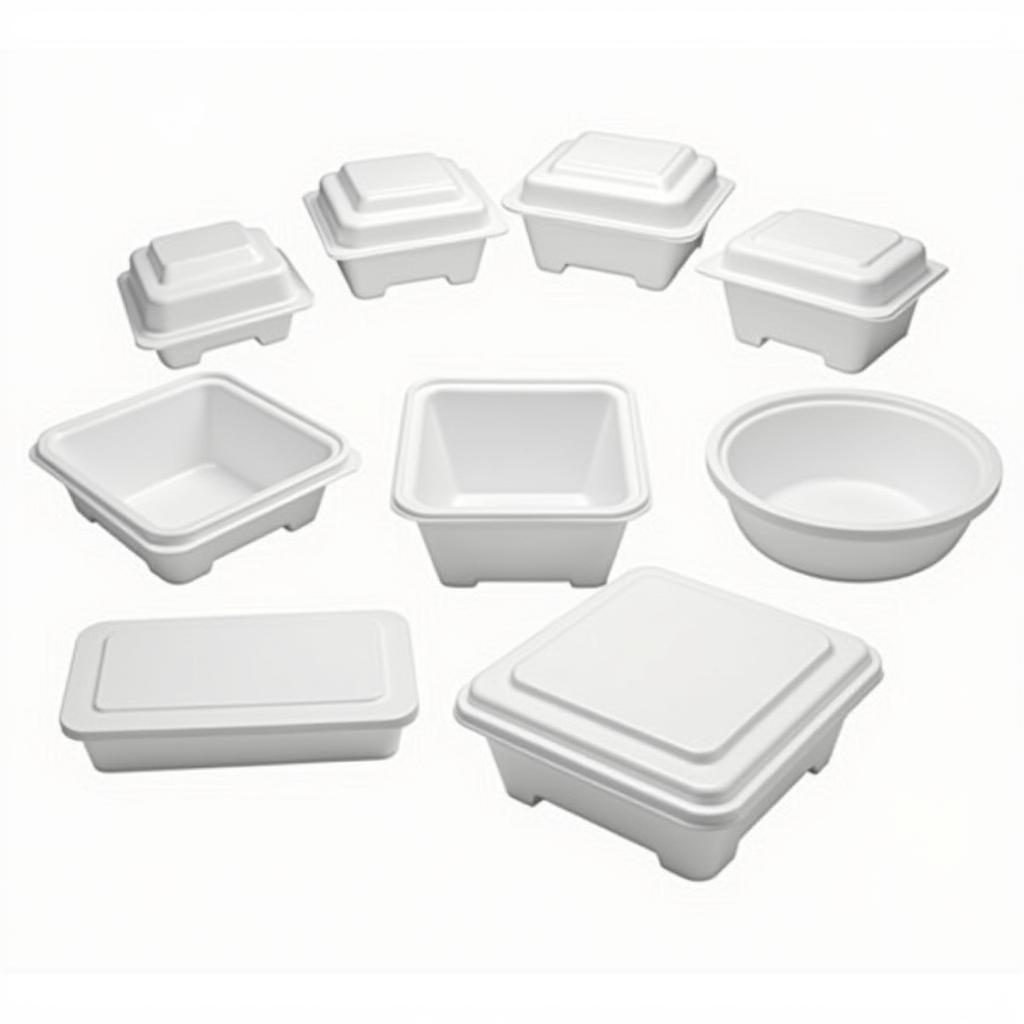Styrofoam Food Containers are a ubiquitous presence in the food industry, offering a practical and affordable solution for takeout, delivery, and food storage. But are they the right choice for your needs? This article delves into the world of styrofoam food containers, exploring their advantages, disadvantages, and alternatives, to help you make an informed decision. Let’s unpack the facts and discover what these convenient containers have to offer. You can find more about containers with lids here: styrofoam food containers with lids.
Understanding the Benefits of Styrofoam Food Containers
Styrofoam, technically known as expanded polystyrene (EPS), offers several advantages that make it a popular choice for food packaging. Its lightweight nature reduces shipping costs, and its excellent insulation properties keep food at the desired temperature for longer. Moreover, styrofoam containers are readily available and relatively inexpensive, making them a budget-friendly option for businesses. They are also resistant to moisture, preventing soggy food and leaks. From hot soups to cold desserts, styrofoam food containers provide a versatile solution for diverse culinary needs.
 Styrofoam Food Containers in Various Sizes and Shapes
Styrofoam Food Containers in Various Sizes and Shapes
Exploring the Environmental Impact of Styrofoam
While styrofoam offers convenience, its environmental impact is a significant concern. Styrofoam is not biodegradable, meaning it persists in landfills for centuries. The production process also involves the use of harmful chemicals. However, it’s worth noting that some initiatives are focused on recycling styrofoam, and advancements are being made to develop more sustainable alternatives.
Weighing the Pros and Cons of Styrofoam Food Containers
When considering styrofoam food containers, it’s essential to weigh the pros and cons carefully. The benefits include cost-effectiveness, insulation, and lightweight design. However, the environmental impact and potential health concerns associated with certain chemicals used in production need careful consideration. For businesses looking to purchase in bulk, consider checking out styrofoam food containers wholesale.
Are Styrofoam Food Containers Safe?
The safety of styrofoam food containers is a topic of ongoing debate. While the FDA has approved certain types of styrofoam for food contact, concerns remain about the potential leaching of chemicals into food, especially at high temperatures.
Eco-Friendly Alternatives to Styrofoam
Thankfully, numerous eco-friendly alternatives to styrofoam are readily available. These include biodegradable options like paper, bamboo, and bagasse (sugarcane fiber). These alternatives offer a more sustainable approach to food packaging while still providing functionality and convenience. If you’re wondering where to find these alternatives, this resource might be helpful: where can i buy styrofoam food containers. It might also offer alternatives to styrofoam containers.
Making the Right Choice for Your Food Business
Choosing the right food container is a crucial decision for any food business. Balancing cost, functionality, and environmental responsibility is key. Consider your specific needs, the type of food you serve, and your company’s values when making your selection.
What are the best Styrofoam to go food containers?
Choosing the “best” depends on the type of food being served. For liquids, tight-fitting lids are essential, and for hot foods, insulated containers are preferred. If you’re interested in styrofoam containers specifically designed for takeout, check out styrofoam to go food containers.
Conclusion
Styrofoam food containers offer a practical and affordable solution for food packaging. However, their environmental impact necessitates careful consideration. Exploring eco-friendly alternatives and making informed choices will contribute to a more sustainable future for the food industry. Understanding the benefits and drawbacks of styrofoam food containers empowers you to make the best decision for your business and the environment. And if you are interested in simple styrofoam containers for food, we’ve got you covered.
Expert Insight:
- Maria Rodriguez, Sustainability Consultant: “While styrofoam offers immediate convenience, the long-term environmental costs are substantial. Businesses should prioritize sustainable alternatives whenever possible.”
- David Chen, Food Packaging Engineer: “Innovations in biodegradable materials are rapidly expanding the options available for eco-conscious food businesses.”
- Sarah Lee, Restaurant Owner: “Switching to eco-friendly packaging aligns with our values and resonates positively with our customers.”
FAQ:
- Are all styrofoam food containers microwave-safe? (No, not all styrofoam containers are microwave-safe. Check the container for microwave-safe labeling.)
- Can styrofoam be recycled? (Recycling options for styrofoam are limited, but some facilities do accept it.)
- What are the best eco-friendly alternatives to styrofoam? (Paper, bamboo, and bagasse are excellent eco-friendly alternatives.)
- Are biodegradable containers more expensive than styrofoam? (Biodegradable containers are typically slightly more expensive than styrofoam.)
- How can I dispose of styrofoam responsibly? (Check with your local recycling center for proper disposal guidelines.)
- Are there regulations on the use of styrofoam food containers? (Regulations vary by location; check with your local authorities.)
- What are the health concerns associated with styrofoam? (Some concerns exist about the potential leaching of chemicals from styrofoam into food.)
Need further assistance? Contact us! Phone: 02437655121, Email: minacones@gmail.com Or visit us at: 3PGH+8R9, ĐT70A, thôn Trung, Bắc Từ Liêm, Hà Nội, Việt Nam. Our customer service team is available 24/7.